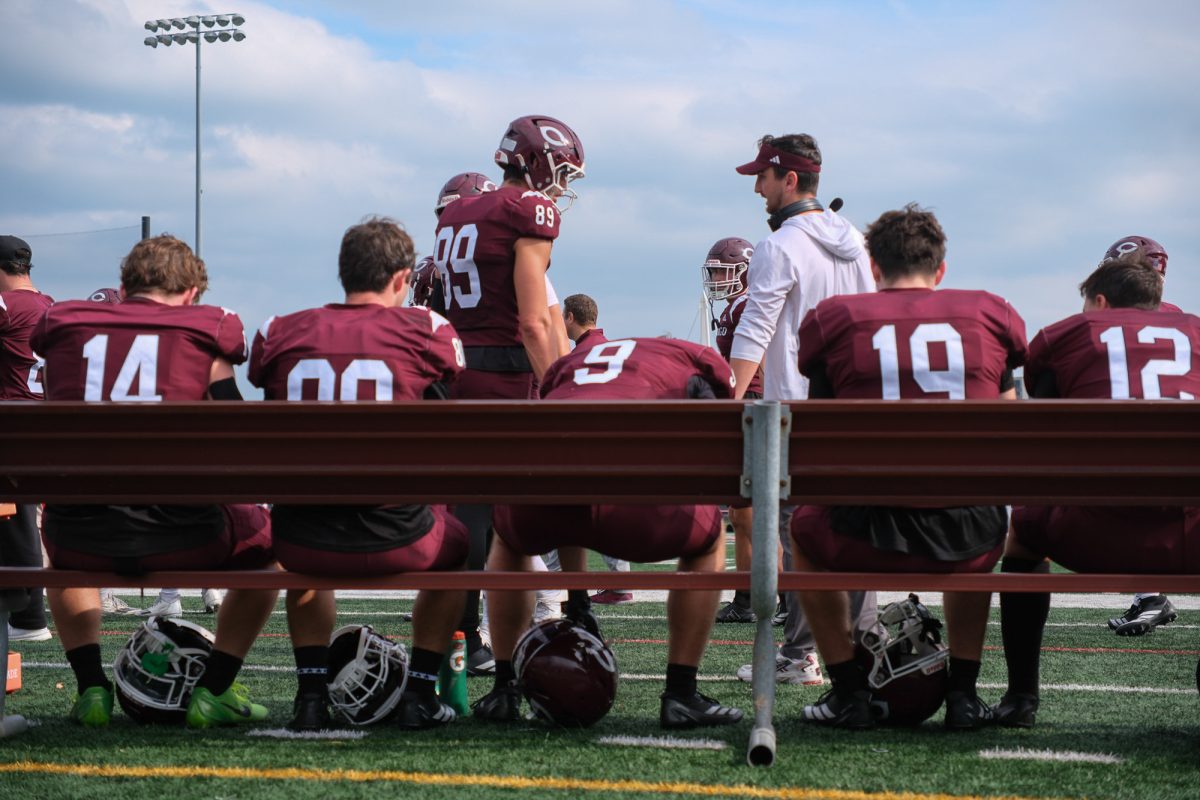It’s a law of physical science that opposites attract, but in tennis, the pairing of two extremes is often the key to unlocking a strong tandem force.
Although first-year doubles partners Garrett Brinker and Noah Schneider would not be described as polar opposites, their differences on the court are distinct enough that the combination of their individual fortes creates a formidable duo. The pair leads the squad’s doubles pairings with a 10–2 mark together on the season, breezing through the competition with Schneider as the setup man from the baseline and Brinker closer up at the net.
“They haven’t really had too many close matches,” head coach Marty Perry said of the rookies’ quick success. “They get on top of people, and they stay up. They don’t get down on themselves.”
After going through 13 different combos last year and finishing at only 39–32 in doubles play last year, the Maroons made the establishment of durable tandems one of their top priorities early on in the 2007 campaign. Brinker and Schneider were paired up at the beginning of winter and have been starting consistently for Chicago at second doubles ever since.
“Coach Perry did not originally think it was a good idea to put us together because he did not want anything to interfere with our friendship,” said Schneider, who is Brinker’s roommate as well as teammate. “In the end, though, it turned out to be a really good decision, and we have only lost to one DIII doubles team all season.”
“It’s kind of funny because Coach Perry set us up both as doubles partners and as roommates, and they’ve both worked out very well,” Brinker added. “It’s nice to have someone that you can count on and turn to on the court as well as off the court.”
One of the benefits of matching up the two freshmen is the limited time that most players have in doubles before reaching college because most junior leagues focus on solo play. Coming in with a clean slate made it easier for them to build a strong rapport that helps them adjust to sharing the court. The skills that each brought to the program only strengthened the case to start them together, fitting perfectly with Chicago’s philosophy on what makes a good tandem.
“We try to get a really steady player and a player that puts points away at the net so they complement each other really well,” Perry said. “You could see [early on] what type of players they are, and it’s just one strategy to put those two types of players together.”
Both Schneider and Brinker offer up a powerful serve, but after that, the two newcomers start to diverge into their different expertises. Schneider brings a strong groundstroke and returns well but has a smaller range up at the net and has trouble coming up with the closing shot for the match point. That’s where Brinker comes in.
Already a two-time UAA Athlete of the Week, Brinker wields an explosive forehand that is especially dangerous when he takes the left-hand side of the two-back formation on the second serve. That positioning allows him to get his full swing on anything coming down the middle of the court. The real threat coming from the Granger, IN native, however, comes when he moves up front to seal the deal on volleys set up by his teammate.
“He’s not scared of anyone on the court, no matter how hard they’re hitting,” Perry said of Brinker’s aggressiveness. “I’ve seen him reach over the net many times to get the ball.”
The lethal combination of Brinker and Schneider that gives full coverage of the court leaves few holes in their game together for opponents to exploit. Of their two defeats this season, one of them came in a close 8–5 match against DI Wichita State (7–6) during the team’s trip to Florida.
In a breakthrough season, the dynamic duo has had its fair share of fine outings, but two showdowns stand out. An 8–4 win against a DI pairing from UW–Green Bay (4–8) at the beginning of the year gave an indication of what the two would be able to accomplish at second doubles, and the more recent 8–2 pounding of Calvin (9–2, 2–0 ITA) to wrap up Chicago’s spring break schedule highlighted their domination of DIII competition.
“I think our best match probably was the one we played against University of Wisconsin–Green Bay,” Brinker said. “It was the second match we played together, so we were still figuring out how to work together. We beat them 8–5, and they were definitely the best team we’ve played. That match gave us a lot of confidence and has helped us get where we are today.”
While Brinker and Schneider have some ground to cover in their positioning during volleys, the tandem has certainly made a fast break out of the gate. They also have the next three seasons to help iron out some of the wrinkles, as well as four matches left in the regular season. Next up for the combo is this weekend’s trip to St. Louis to take on Coe (9–8, 2–1 IIAC) Saturday and Wash U (10–3, 0–0) Sunday.








